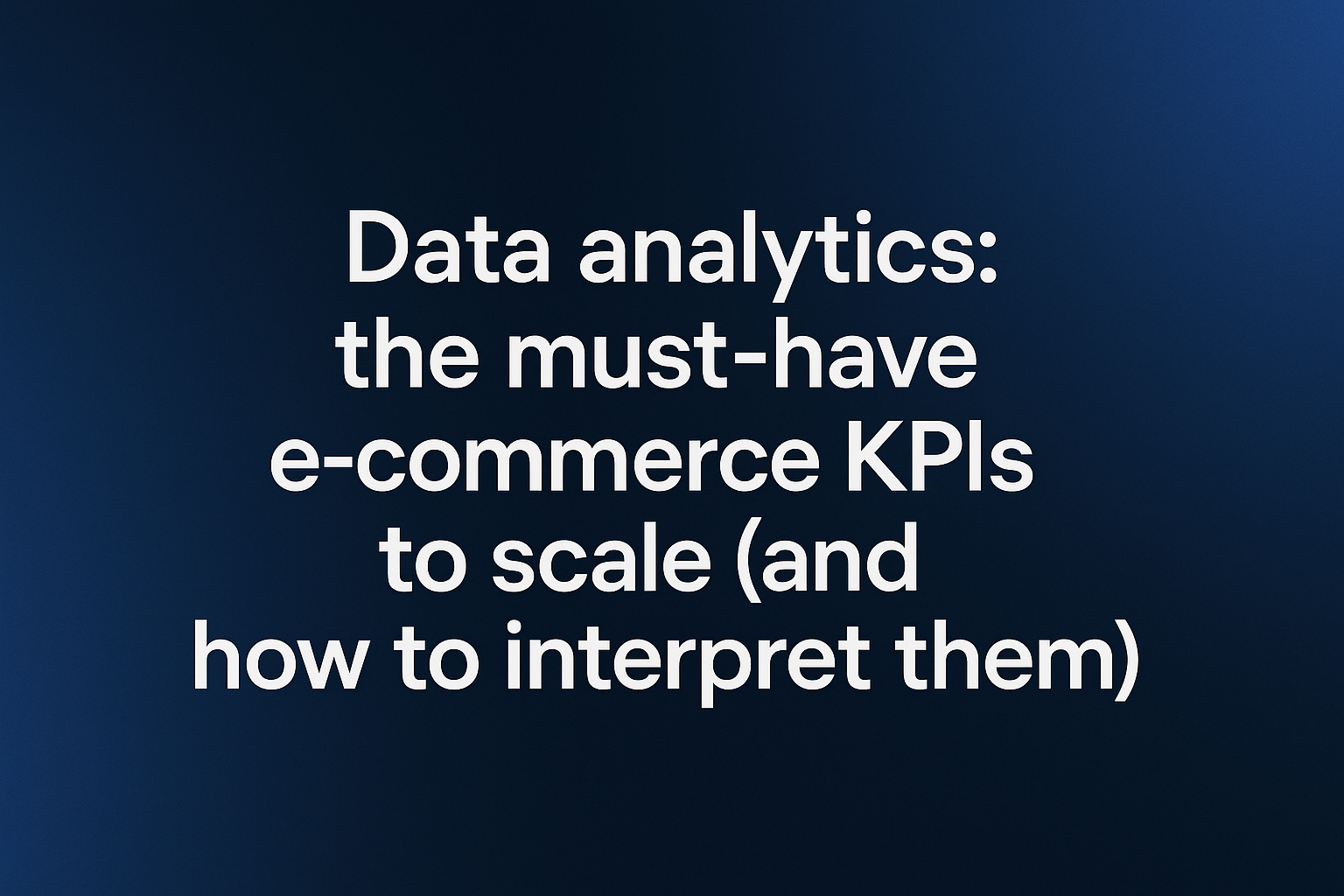
A lot of online retailers are looking at their turnover... but completely unaware of acquisition cost, of the real margin, of repurchase rate Or of the customer lifetime value (LTV).
The result: they think they are growing... while they are getting poorer.
Conversely, brands that scale (Gymshark, Sephora, Amazon, DTC brands) drive Everything to the data, not by instinct.
👉 The difference between an e-commerce that survives and an e-commerce that scales?
Its ability to read and use its KPIs.
This article shows you The really useful indicators... and how to use them to make better decisions.
🎯 Objective: to understand How much does a customer cost you and Which channels are the most profitable.
🎯 Objective: optimize the shopping experience for Do more with the same traffic.
🎯 Objective: to know What do you really win... not just what you cash in.
If LTV/CAC < 3 → you are losing money in the long run.
CA — product cost — logistics — marketing.
👉 The real performance indicator per order.
A returning customer = a free customer.
The best e-retailers aim for > 30%.
ROAS = raw ad return
ROI = net profit after costs
👉 Many cut profitable campaigns due to lack of correct calculation.
Lower KPI -> Conversion rate I Action -> UX optimization, speed, offer
Lower KPI -> Average basket I Action -> Upsell/cross-sell/bundels
Lower KPI -> Increasing CAC I Action -> Change audience/channel
Lower KPI -> Low LTV I Action -> Loyalty/Retention
Lower KPI -> High returns I Action -> Improve product/description
Lower KPI -> Low margin I Action -> Negotiate suppliers/logistics costs
👉 Analyzing is not enough. You have to link KPI -> action.
E-commerce data is scattered:
❌ If you analyze everything separately → you are missing out on reality.
✅ You have to a central cockpit.
Klark = the modern e-commerce cockpit.
It allows you to:
✅ Centralize all your data (sales + payments + CRM + cash flow)
✅ Visualize really important KPIs (AOV, margin, LTV, repurchase, estimated CAC)
✅ Identify the most profitable channels
✅ Follow your cashflow in real time
✅ Take better strategic decisions (scaling, promotions, pricing, stocks...)
🎯 In other words: Klark gives you the vision of a CFO... without having to become a financial analyst.
An e-commerce that scales is not the one that sells the most...
It is the one who Understand his numbers and Acts as a function.
💡 Practical tip: start with 3 critical KPIs:
Then gradually add the others (LTV, repurchase, returns, etc.)

CAC, AOV, conversion rate, margin, margin, LTV, repurchase rate and logistics cost.

You have to compare the acquisition cost (CAC) to the margin per customer (LTV/contribution margin).

LTV shows the total value of a customer over time, not just their first purchase. It allows you to know how much you can invest to acquire it.

Klark centralizes all data (sales, payments, customers, cash flow) and automatically calculates key KPIs to manage your e-commerce intelligently.